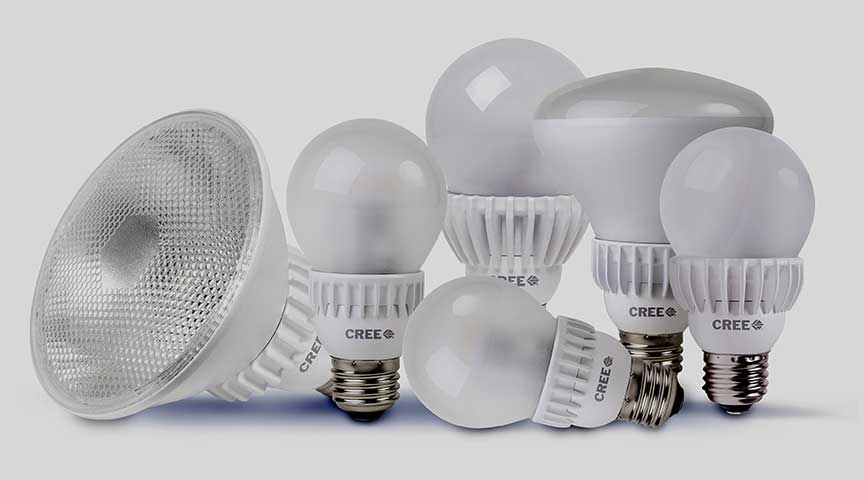People often wonder which type of lighting to use in their home with all the choices on the market today. It is important to know the differences between the options available.
The wattage of a light bulb refers to how much electricity it consumes, not how much light it produces. The amount of light is measured in units called lumens. A 60-watt incandescent light bulb produces about 800 lumens of light and a 100-watt bulb about 1,600 lumens.
Today, your primary choices of bulb are halogen, CFLs (compact fluorescent lights) and LEDs (light emitting diodes), which are listed in order of increasing efficiency. For many home applications, LEDs are the best choice even though they cost more initially.
Halogen bulbs are basically incandescent bulbs with halogen gas around the filament to improve efficiency enough to meet efficiency standards.
CFLs are much more efficient, using only about 25 percent as much electricity as incandescent bulbs to produce the same about of light—and they last 10 times longer.
CFLs can produce true full-spectrum (simulates natural sunlight) light quality and can be purchased with warm white, cool white and daylight color temperatures. Daylight lamps have an even higher color temperature, and they produce more accurate colors and are good for tasks such as reading and painting.
LEDs are the newest and most efficient light source available and provide an excellent payback. A 12-watt LED produces as much light as a 60-watt incandescent bulb. The LED bulb should also last a minimum of 20,000 hours. Most are dimmable, work well at cold temperatures and reach full brightness immediately. LEDs gradually get dimmer over time. When a LED is rated for 20,000 hours, its output will stay above 70 percent of its original brightness for that time.
If you have been using incandescent bulbs, you are probably accustomed to a yellowish light quality. This is called the “color temperature” of a bulb. Incandescent bulbs are in the 2700-degree K range. The whiter “daylight” LEDs and CFLs are in the 4,000- to 5,000-degree K range. Most people grow accustomed to the whiter light and prefer it. The color temperature is listed on the packaging.
CRI (color rendering index) is another quality of the light bulb to consider. A higher CRI makes objects in a room look more like they would look under natural sunlight. A CRI above 80 is considered adequate for homes, but 90 or above makes everything look better and doesn’t cost much more.
There are four general types of lighting uses—ambient, accent, decorative and task. Ambient lighting is for general illumination with comfortable brightness. Accent lighting can create a mood in the room or highlight areas or objects. Decorative lighting is when the light itself is the object, such as a chandelier. Task lighting is for reading or doing a specific activity.
For effective lighting, install several grouped circuits with dimmers to control and vary the lighting schemes. For example, choose high-CRI bulbs over a dining table to enhance the appearance of food. An overhead high color-temperature bulb above a chair would be good for reading or other tasks.
For existing rooms, where it may not be easy to rewire or add circuits, switch to LEDs in most fixtures, and install dimmer wall switches.
The goal for lighting efficiency is to use as little lighting as needed. Where you do not have a wall switch, such as with a table lamp, install a three-way socket and use a new three-way LED. Add a four-bulb lighting kit to a ceiling fan with a switch to allow you to switch on fewer than all four lights.
No matter which type of bulb or light fixture you choose, start saving by turning lights off when you leave a room.






